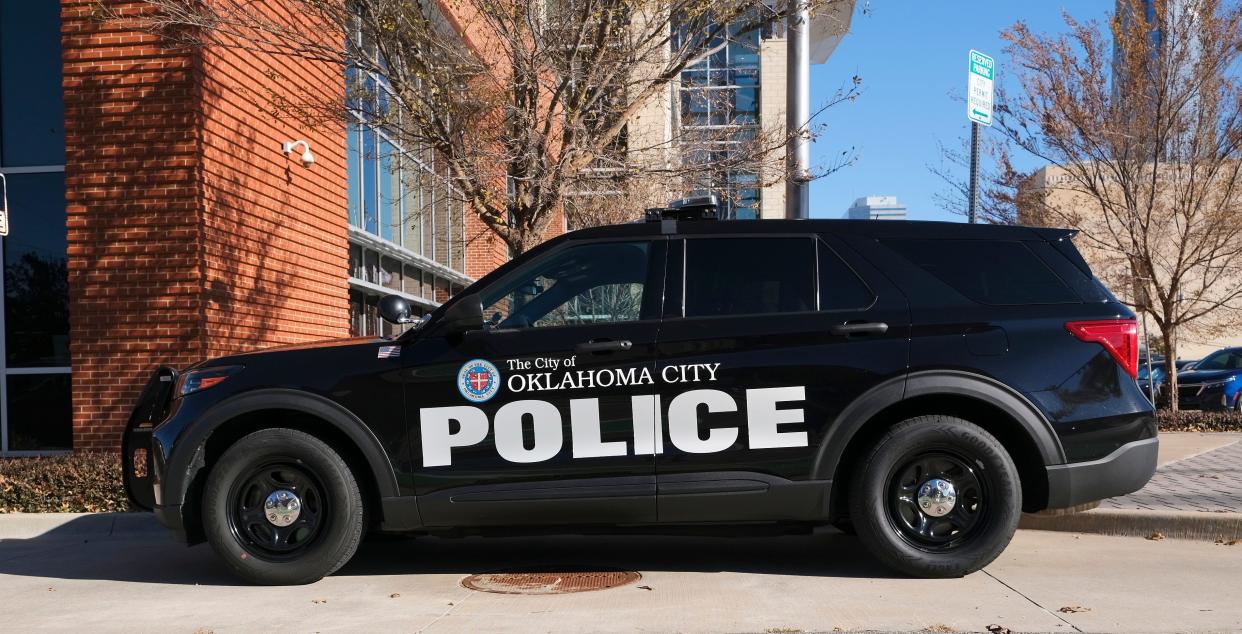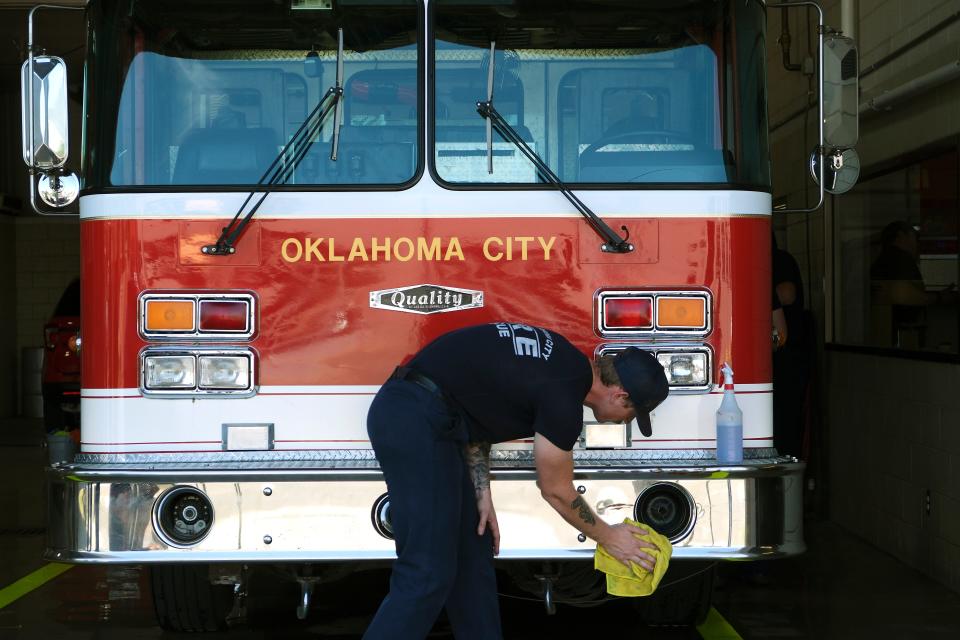How the arena vote next week will also indirectly determine funding for police, fire fleets

When Oklahoma City residents vote Tuesday on whether to build a new arena, they also will be indirectly determining whether to continue the city's funding source for police and fire fleet replacement.
A use tax, assessed on online purchases since 2017, is expected to bring in more than $180 million should voters approve the proposed six-year arena sales tax. For the past 24 years, use taxes matching other temporary sales taxes have filled the gap in paying for police and fire fleets that have no other dedicated source of funding.
Chief Financial Officer Brent Bryant said city staff expects to continue that approach to use taxes should the new arena tax be approved. Mayor David Holt confirmed the use tax will likely continue to be used for the fleet replacement.
“For better or for worse, we’ve grown dependent on the use tax to maintain our fire and police equipment and infrastructure,” Holt said. “It’s very obscure and it’s hard to communicate all the aspects of these complex mechanisms. But yes, it’s true — the use tax has filled this need for some years.”
Whenever a sales tax is approved, statutes allow the city council to create a matching use tax that is charged for goods and services where they are intended to be used in Oklahoma City, but they are paid to out-of-state vendors who aren’t required to collect sales taxes.
When the first MAPS sales tax was approved in 1993, the city council passed a matching use tax to create a maintenance fund for the projects. Back then, the use tax consisted largely of construction materials and some catalog sales. The entire five-year original MAPS use tax raised $20.6 million.

The decision to dedicate use taxes for police and fire fleet replacement, rarely if ever mentioned during campaigns, started in 2009 with MAPS for Kids, continued with the Major League City tax in 2008 and then MAPS 3, Better Streets Safer City, and MAPS 4.
Use tax dedicated to police, fire fleet triggered by The Oklahoman's investigation
The informal policy was triggered by a 1996 investigation by The Oklahoman that revealed more than one-third of the city’s 602-car police fleet was on the streets far beyond their economic or useful life. Some cars were being driven with holes in the floorboards.
The Oklahoman discovered the city spent almost $96,000 on repairs for a car until it was finally retired with nearly 300,000 miles. At the time, the city did not have a dedicated or reliable source of funding for the vehicles.
Police MSgt. Gary Knight, on the force since 1990, said the condition of the fleet is far different from what it was prior to the replacement funding provided by the use tax.
“We didn’t have enough cars,” Knight said. “We would have to sometimes get into a paddy wagon because we ran out of cars. We would have four officers in one paddy wagon instead of four police cars on the street.”
Knight also remembers driving a police cruiser with a hole in the floorboard.
“You would look down, see a rusted hole in the bottom and see the road passing,” Knight said. “That created some temperature problems when it was very cold, ice or raining, or very hot.”
The Oklahoma City police fleet now totals 1,146 and they come with far more technology and safety features including ballistic panels that protect officers from gunfire aimed at vehicles. Knight said the drain on the fleet, however, is constant.
“Fifteen percent of the fleet is down at any given time for maintenance, or damaged or wrecked,” Knight said. “Police officers drive cars hard whether in pursuits or for other reasons. There are types of driving involved that are different from what happens with a normal driver. The cars are under a lot more stress.”
In a city sprawling over 621 square miles, having a reliable fleet is critical to police officers being able to do their jobs, Knight said. “Having a healthy fleet of cars, cars that are up and running, is paramount to what we do.”
The fire department faced similar challenges with fleet replacement and upkeep in the early 1990s. Capt. Scott Douglas, department spokesman, said the current inventory includes 146 front line/first response apparatus.
“Our rig fleet is excellent,” Douglas said. “We’ve got new ladders, new engines and we have a fleet replacement that we keep up. The city does a great job providing us with a fleet we can work with.”
This article originally appeared on Oklahoman: OKC's NBA arena vote will also determine future police, fire funding

